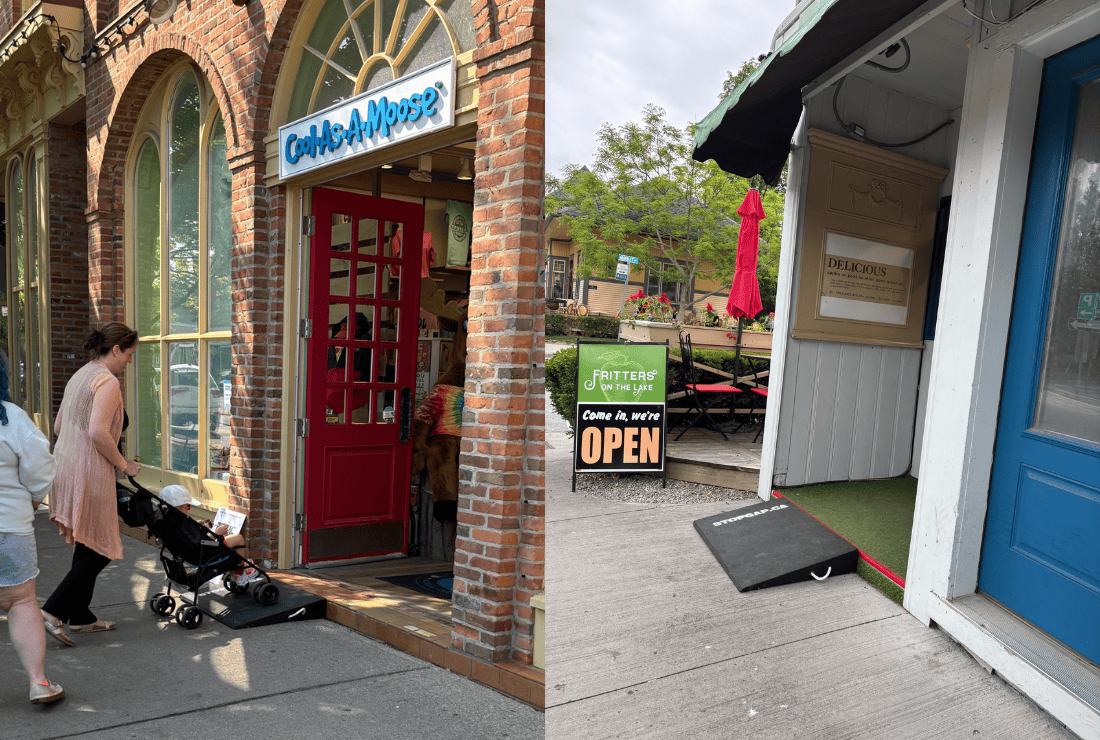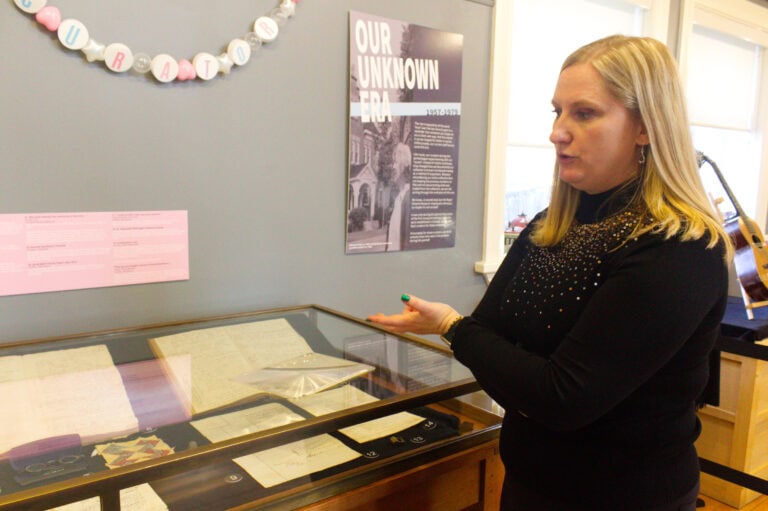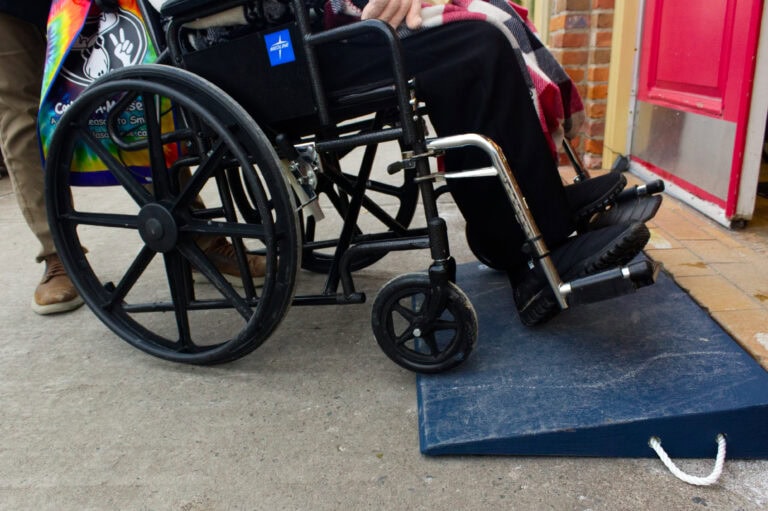Niagara-on-the-Lake’s council has endorsed the use of a new tool to make places in town more accessible, paving the way for businesses to start using them this fall.
The StopGap ramp program allows businesses to place temporary ramps outside single-step entrances, improving access for people with mobility issues. Applications for the ramps are now open.
Council decided to endorse the program during last Tuesday’s committee of the whole meeting, unlocking $7,500 in municipal funding for 15 portable ramps from the StopGap Foundation.
The town has not announced which businesses will receive the ramps, but said they will be distributed on a first-come, first-served basis.
Pamela TurnerSmith, a Niagara-on-the-Lake resident who uses a scooter, has advocated for the program for years. She was acknowledged in council’s report for her efforts.
“It’s been three long years,” said TurnerSmith. “It’s the first step to accessibility.”
She called the endorsement “a huge step” that made her advocacy worthwhile.
Businesses applying for a ramp must meet certain criteria. Entrances must have a single step between two and nine inches high. Ramps must be placed in a way that coexists with the sidewalk and be approved by the landlord if the building is leased.
Applicants must also sign an agreement with the StopGap Foundation, assume legal responsibility for the ramp, ensure it is clear of snow and ice and provide proof of $2 million in liability insurance.
Council broadly supported the initiative, though some concerns were raised.
The proposal was discussed at the municipal heritage committee meeting on July 9 before receiving endorsement from the committee of the whole. Concerns focused on whether the ramps would interfere with the historic character of Old Town.
To address this, the town will require ramps to come in pre-approved colours that blend with their surroundings. Labels will not be permitted on the ramps.
Coun. Gary Burroughs raised safety concerns at the heritage committee meeting, suggesting a caution sign to alert pedestrians. Coun. Tim Balasiuk recommended using reflective material.
“Some sort of reflective material (would be good),” he said.
Coun. Wendy Cheropita suggested treating the initiative as a pilot project.
“I think this is a really good initiative, and there are certainly a lot of buildings that aren’t accessible,” she said. “But we do run the risk of what if every business wants to have this, what if every business wants us to pay for it? … Maybe this should be a test.”
Despite concerns, TurnerSmith said the decision marks a positive step forward.
“I’m happy that the town is embracing, finally, and supporting their first step to accessibility,” she said.
StopGap began in 2011 as a one-off project in Toronto. Since then, the foundation has helped install more than 2,000 ramps worldwide.










